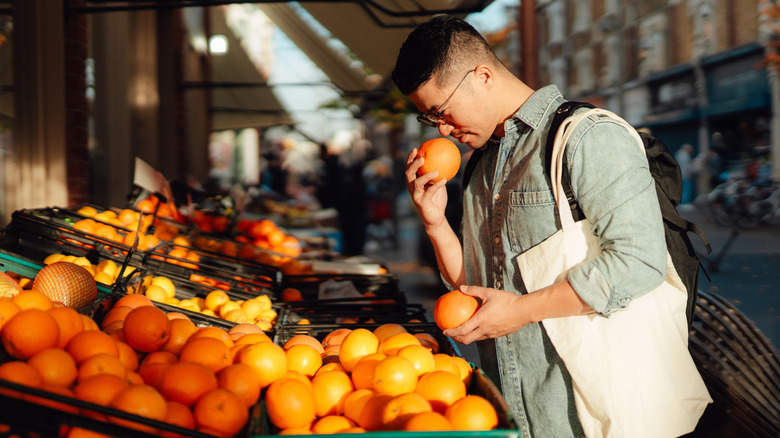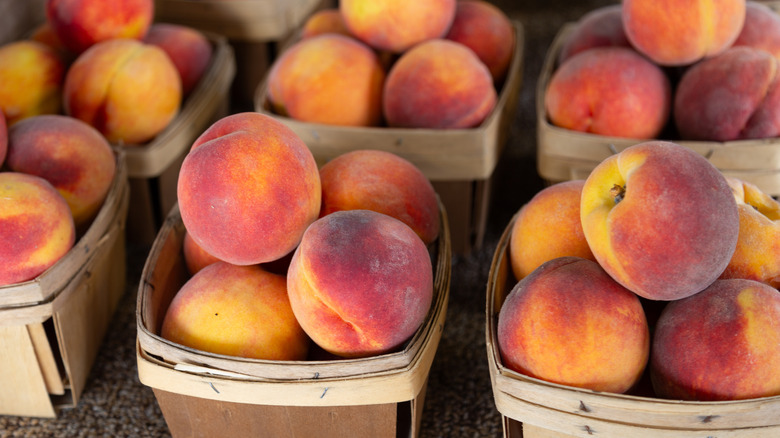The Most Important Thing To Learn Before Buying Fresh Fruit
When it comes to selecting the freshest, juiciest fruit, there's really just one piece of information you need to know: what's in season in your area. While it might be tempting to fill your cart with strawberries in December or mangoes in March, choosing fruit that's in season locally is the key to enjoying produce at its peak flavor and quality. Having worked at a farmers market in Portland, Oregon, I can attest that fruit that's in season isn't just tastier; it's also more nutritious, more affordable, and more sustainable.
When fruits are harvested at their natural ripeness and sold soon afterward, they retain more of their vitamins and antioxidants. Out-of-season fruit, on the other hand, often travels thousands of miles or is harvested early and ripened artificially during transit. That extra time in shipping or cold storage results in bland flavors and diminished nutritional value.
Of course, learning when fruits are in season requires a little research, but it's worth the effort. Seasonality varies by region, so the months that summer fruits are available in California are going to be different from Texas. For example, you can start picking the sweetest peaches around May or June in the South, while apple-picking season doesn't kick off in the Northeast until September. When you shop in alignment with your region's growing cycles, you're also supporting local agriculture and reducing your environmental footprint. In-season produce usually travels a shorter distance from farm to table, meaning fewer fossil fuels are used in transportation and refrigeration.
Buying in-season fruit is better for many reasons
Shopping for fruit seasonally is also just a lot more fun. Knowing what's in season helps develop your palate and creativity in the kitchen. Instead of relying on the same fruits year-round, eating seasonally encourages you to embrace variety. Think juicy berries and stone fruits in the summer, crisp apples and pears in the fall, bright citrus in the winter, and tender strawberries and apricots in the spring; each season offers its own set of fresh delights. This natural rhythm not only enhances the sheer pleasure of eating fruit but also connects you more deeply to Mama Earth and her cycles.
To get started, consider printing out a seasonal fruit chart for your state and sticking it on your fridge. Get to know your farmers markets, community-supported agriculture (CSA) programs, and local co-ops — they're excellent resources for understanding your area's produce seasons. A ripe cantaloupe in July or a just-picked fig in September is a sensory revelation when enjoyed at the height of its season. Just think how sad a tomato tastes during the dead of winter.
In short, the most important thing to learn before buying fresh fruit is knowing what's in season where you live. That single bit of knowledge can transform the way you shop, eat, and savor produce. It ensures the fruit you bring home is not only fresher and more flavorful but also better for your health, your budget, and the planet.

